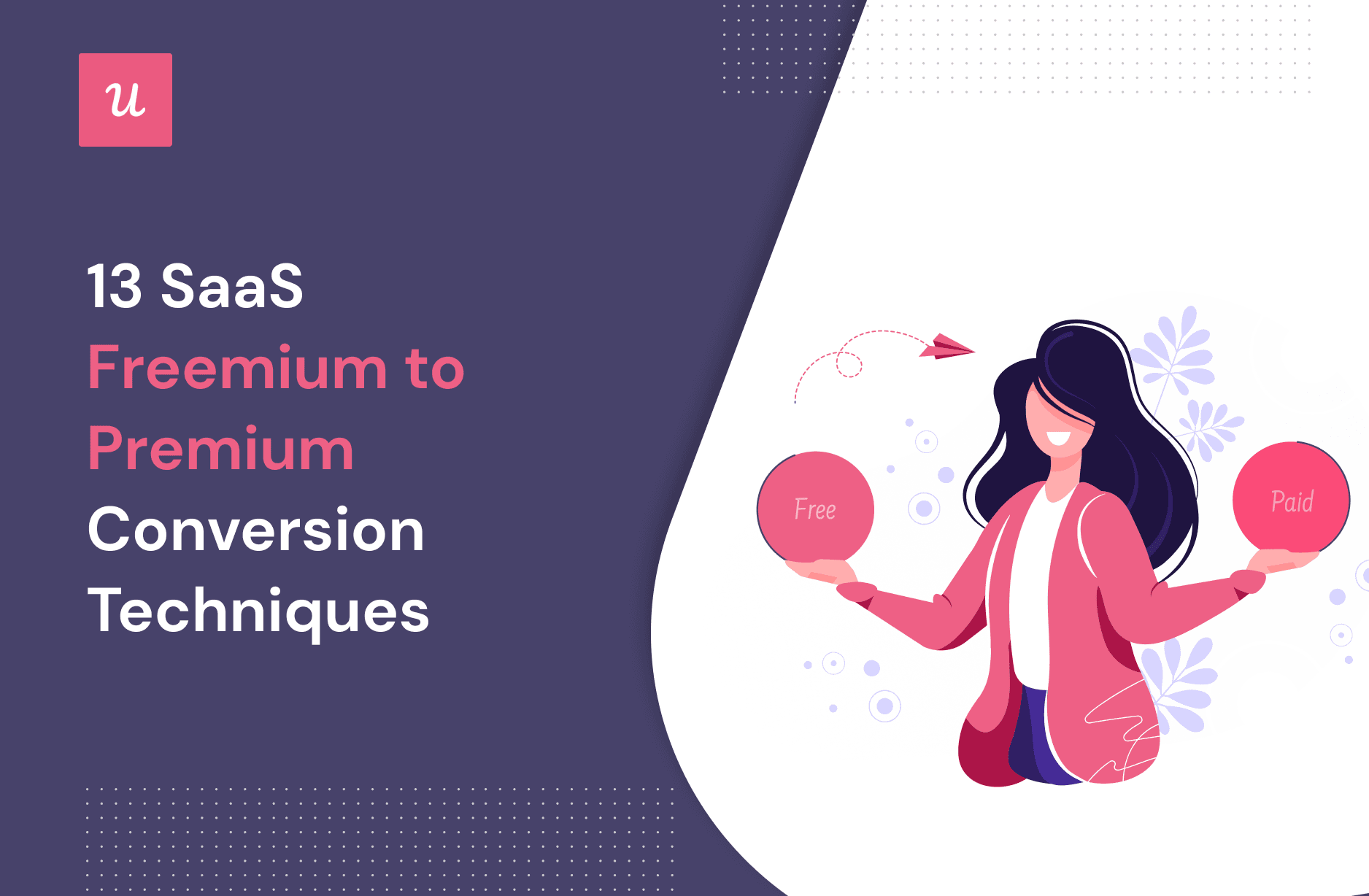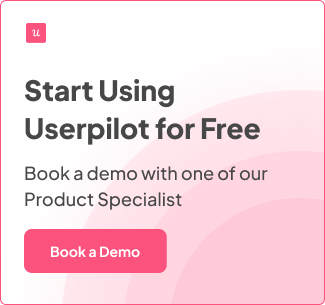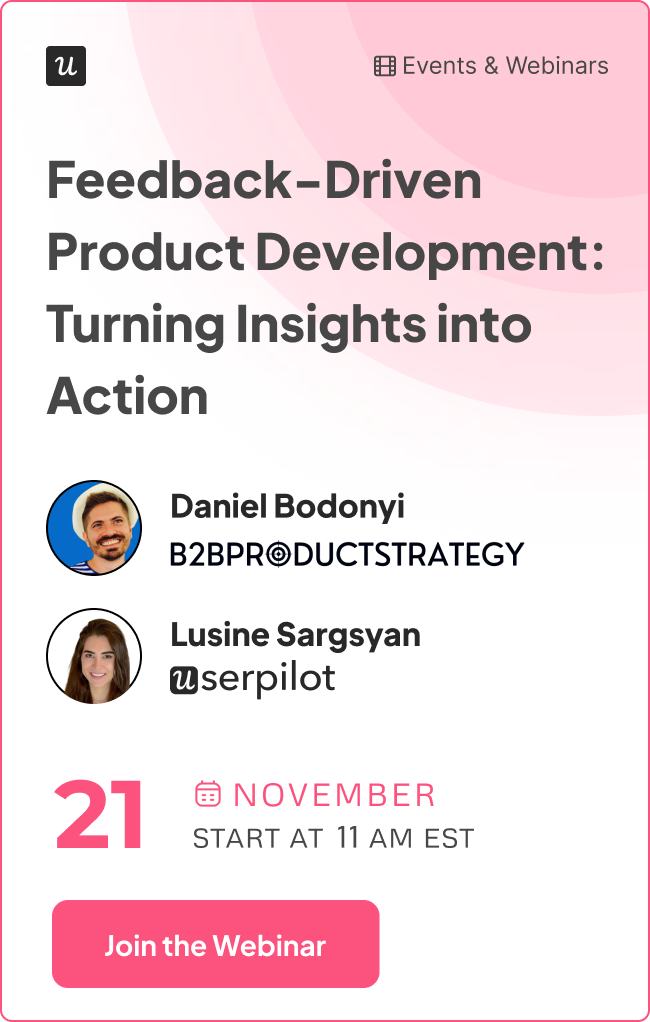Looking for ways to engage your SaaS users in a way that drives freemium to premium conversions more efficiently?
Of course, there’s no one size fits all, but there are specific techniques that work well mostly because they have one thing in common.
They are all focused on providing a great user experience.
This article outlines 13 exceptional techniques for converting your free users into paid users.
Let’s dive in!
Summary of freemium to premium conversion techniques
- The freemium model involves offering your basic product features for free.
- SaaS companies that cater to small businesses have higher freemium conversion rates than those that serve medium-sized companies.
- Three factors decide the free trial to paid user conversion benchmark– the type of trial, the product complexity, and the audience.
- Your expansion rate is the percentage of free users who upgrade to a premium plan in one month.
- Keep in-app upgrade prompts contextual if you must upsell free users.
- Freemium users must understand the value of premium features before they can upgrade.
- Most SaaS companies appeal to FOMO to make free trial users purchase a subscription.
- Turn insights into action! Want to skyrocket your freemium conversion rates? Get a Userpilot Demo and see how.
What is the Freemium Model in SaaS Companies?
The freemium model is a pricing strategy that involves offering your most basic product features for free but placing a premium on advanced features.
The objectives of the freemium model are to get users to:
- experience the value your product has to offer
- upgrade once their needs change and the premium version of your product benefits them
The freemium version of your product is your greatest selling point— it must offer enough to drive value for the user. But not too much that free users don’t see the need to upgrade.
What is Freemium to Premium Conversion Rate Benchmark?
As much as I’d like all free users to become paying customers, that’s sadly not the case and may never be.
So how do you determine if your freemium conversion rate meets the standard?
It’s simple. Study the market, i.e., your target audience and competitors.
Databox reports that SaaS companies that cater to small businesses have an average monthly conversion rate of 6-10%. Meanwhile, SaaS companies that deal with medium-sized companies have a 3-5% benchmark.

A better alternative is to look at your own numbers over time and always strive to do better. In the end, all SaaS products are different and if your numbers don’t match the above, that’s ok.
What is the Free Trial to Paid User Conversion Rate Benchmark?
While the benchmark for freemium to premium conversion is reliant on the size of businesses you work with, the free trial conversion rate benchmark mostly depends on the type of trial involved, product complexity, and your users.
Here’s what we found from our study of various trials and industries:
- The B2B sector benchmark is between 14-and 25% due to the complexity of the SaaS products involved.
- B2C companies typically offer straightforward solutions to end consumers, and longer trial periods, so the benchmark is 57%.
- According to Useproof, the average conversion rate for Opt-in Trials is 25%.
- Meanwhile, Kipfolio relays an industry benchmark of 60% for Opt-out Trials.
How do you Calculate the Freemium to Premium Version Conversion Rate?
The best way to calculate your freemium to premium conversion rate is by using Expansion Monthly Recurring Revenue.
Expansion MRR is the monthly income generated from your existing users through upsells, i.e., upgrades.
Here’s the formula:
[Expansion MRR at month’s end]-[Expansion MRR at the beginning of the month]/Expansion MRR at the beginning of the month multiplied by 100%
Let’s take a quick example to demonstrate what I mean.
If your Expansion MRR is $3000 at the beginning of the month, and by month’s end you have an MRR of $4000, your freemium to premium conversion rate is:
[4000-3000]/3000 x 100%
= 33%

How do you Upgrade Free Users to Paid Users?
Depending on the product you’re offering and your pricing plan, you need different tools in your arsenal to improve your freemium to premium conversion rate. For each strategy, a different approach is required.
However, you must guide these users from onboarding to activation, helping them experience the value your product offers.
Before we get into actual tactics, there are some things to keep in mind depending on what type of free users you are trying to upgrade to a premium version:
1. In-App Tactics for Free Users of Freemium Account to a Paid Account
Automation, Product Analytics, and Personalization are the power trio you’ll need to launch in-app experiences that convince a free user to get a subscription.
Leverage product usage data to understand how users engage with your app and figure out their pain points. Then you can automate targeted prompts to show them what they’re missing out on and encourage upgrades.
2. In-App Tactics for Free Trial Users to Paying Customers
Turning free trial users into paying customers is about leveraging urgency and appealing to FOMO after delivering meaningful value with your product.
So, during the free trial, grant them access to all your premium tools, and let them see what’s possible if they upgrade.
Also, keep in-app prompts contextual; you want to send the right upgrade message at the right time so that you don’t come off as ‘sales-y.’
Monitor product analytics and the timestamp on the free trial, then automate your in-app messaging to send prompts at specific intervals [e.g., three days before trial expiration].
3. Other Upselling Techniques
Other customer expansion strategies you can apply to generate more revenue from existing users are pricing strategy, cross-selling, and the use of add-ons. However, we won’t discuss these account expansion techniques in this article as these mostly apply to paying customers.
Now let’s look at specific techniques you can use for different scenarios.
How to Convince Free Users to Upgrade to a Paid Plan
You turn free users into paid users by showing them that ‘while your freemium plan currently offers meaningful value, they could solve more complex problems with the paid features in your app.’
Show your free users what they’re missing out on by not upgrading to the paid plan.
Here’s how you can convince them:
- offer limited features to freemium users
- add feature usage limits for free users
- use segmentation to trigger in-app upgrade messages contextually
- use in-app prompt to help users discover premium features
- use modals and tooltips to showcase free product limitations
- offer freemium users free trials to paid products
1. Offer Limited Features to Freemium Users
When you give free users full access to your app, they see no need to pay for a subscription plan. Incorporating feature limitations into your free version is exactly what users need to guide them toward the paid plans.
However, offering limited access to the product won’t work unless the user knows what they’re missing. You have to place the paid features where they can see them.
The time tracking software Harvest displays all product features on the screen. However, the ‘import’ feature is grayed out. A tooltip + CTA automatically pops up when the end-user happens to hover around that feature, contextually guiding them to upgrade.

2. Add Feature Usage Limits for Free Users
In your freemium model, limit the usage of the free features.
Once users reach their limit, they’ll automatically start to see the downside of the freemium plan.
Operating within usage limits will trigger curiosity and FOMO, and those emotions will convince them to switch out the free product for a subscription.
There should always be an in-app prompt that tells users to upgrade their plan if they want to keep using a feature.
The image below is Slack’s freemium upgrade prompt that targets users who get no results when searching the message history looking for something.
Notice how Slack doesn’t tell the user it didn’t find anything. It reminds them of the 10K messages usage limitations and that the search can only go so far.

3. Use Segmentation to Trigger In-App Upgrade Messages Contextually
Sending in-app upgrade messages at the right time will increase your chances of converting more users from freemium to premium.
The first step to sending targeted prompts is studying user behavior through product analytics so that you’re aware of their pain points.
Next, you build segments and trigger upgrade messages relevant to each segment.
With Userpilot, you can create segments of your user base, craft targeted messages for each segment, and automate tooltips and modals at vital stages in the user journey.

4. Use In-App Prompts to Help Users Discover Premium Features
Your freemium customers might not know about certain features unless you show them. I don’t mean you should be sending unsolicited emails selling paid features to users in the middle of a workday.
But simply, if users reach their usage limits, trigger an in-app prompt, showing them how to extend their interaction with an easy upgrade.
Loom keeps all in-app messaging contextual. On reaching the five-minute recording limit, Loom sends an in-app prompt offering unlimited recordings if they upgrade.

5. Use Modals and Tooltips to Showcase Free Product Limitations
Instead of constantly showcasing paid features, you can also increase your freemium conversion rates by showing users the limitations of the free version. You could mention that the free plan provides limited usage for certain tools e.g: no free storage.
Use modals contextually and tell the user of that feature’s limitations and sell the idea of added value on the premium version.
Like Dropbox does, exactly when the user might need additional storage.

6. Offer Freemium Users Free Trials to Paid Features
Many reputable companies that operate the freemium model offer free trials for paid features to reduce customer acquisition costs and drive more expansion revenue.
This conversion strategy allows freemium customers to have firsthand experience of the ad-free version of your app and will become the only push they need to switch from the free plan to a paid version.
Unlock these paid features for a specified duration, by offering a free trial of premium features. This way free users can see the value an upgrade might provide.
Since your product is constantly changing, there will come a point in time where a new feature you add will be the one driving the upgrade decision for a free user.

How to Convince Free Trial Users to Become Premium Users
Convincing free trial users to accept a premium upgrade could be more tasking because you have limited time to demonstrate product value.
Here are some winning strategies to convince trial users to become paying users after their trial period.
- optimize the onboarding process to drive users to activation
- remind new users of trial limitations
- try paid trials to qualify users
- how free users know what they’re missing out on and reminding them of the trial expiration
- use gamification to showcase product value
- understand why users don’t upgrade using micro-surveys before the trial expirations
- offer trial extensions and discounts
7. Optimize the Onboarding Process to Drive Users to Activation
You got them to sign on for the trial, now what?
The next step is nurturing these users through their journey, from onboarding to activation – where they actually derive value from your product.
How?
Use onboarding checklists to point new users to the product’s core features they can explore to get their ‘Aha! moment’.
The chatbot software Kommunicate uses a two-step checklist to give new users a head start.

Although you can have multiple onboarding checklists for various stages, we recommend creating a straightforward checklist per milestone.
Don’t like coding? Use a product adoption tool like Userpilot to build simple onboarding checklists without writing a line of code!

8. Remind New Users of Trial Limitations
When you limit features in the free trial, it’s easier to study usage patterns and understand if your target is willing to purchase the paid version.
While your new user engages with the product, constantly remind them that their experience is limited.
Remind trial users of the usage limitations they’ll experience and sell the paid plan as a solution. With a well-placed Upgrade button, you are also making it easier for them to upgrade.
Take a cue from the collaboration tool FigJam, where free trial users can not access unlimited design files unless they upgrade.
Test different placement and banner sizes too.

9. Try Paid Trials to Qualify Users
Anyone who gets the slightest whiff of interest in your product may jump on a free trial. But a paid trial will only attract:
- people who need your product
- and can afford to pay for it
With this technique, Customer Acquisition Costs may be on the high side, but conversion rates will increase. When users enter their credit card details and pay even as little as a dollar, they’re more inclined to use the product and understand its value, hence a higher freemium conversion rate.

10. Show Users What They’re Missing Out on and Remind them of Trial Expiration
Getting users to purchase your paid plans after the free trial isn’t possible unless they understand the solutions you offer and how they can be valuable to them. Thus, the trial is your one shot to prove the value of your product and convince free users to sign onto the premium offer.
Automate in-app messages to remind users of trial expiration dates and a CTA with a leading link to the pricing page.
Slack uses modals to recommend a premium upgrade and remind users of their trial expiration date.

11. Use Gamification to Showcase Product Value
Gamification involves introducing game design elements —such as points, badges, and scores — in your app, thereby encouraging users to explore your product features.
Assign challenging tasks to power users, which, if they succeed in, they earn a reward that allows them to test your paid features. This strategy means users can experience product value firsthand and go further to upgrade after the free trial period.
The project management tool ProdPad used gamification to increase its conversion rates.
Before the introduction of this strategy, ProdPad offered a 30-day trial. However, users were reluctant to upgrade as no sense of urgency was attached.
Here’s what they did:
- They reduced the trial period to 7 days
- encouraged users to ‘magically extend trial’ by testing new features
- included masterclass videos and tooltips for each feature on the product dashboard
- promised unlimited days as part of the game but added a price tag to it
This strategy sped up the customer’s journey to activation and cut their conversion time by four weeks!
Many other SaaS companies have since incorporated gamification in their UI to optimize onboarding and improve brand engagement.

12. Use Micro Surveys before Trial Expiration to Understand Why Users Don’t Upgrade
The first step to getting insightful feedback from users is allowing them to get a good sense of your product. Then a day or two before the user completes their free trial, send them a survey to understand why they’ve yet to upgrade.
Analyze this information, understand their pain points, and proffer solutions. Here’s how you can help:
- offer personal service calls for users struggling to understand a feature
- extend the trial period for those awaiting budget approval
- offer discounts for financially constrained users

This is a slideout with a micro survey built with Userpilot. Want to build a contextual micro-survey for your users? Get a demo and see how.
13. Offer Trial Extensions and Discounts
After collecting in-app survey responses from your free users, segment your respondents based on their feedback. The sets of people you need to cater to:
- financially constrained users
- undecided users.
The users on a shoestring budget have tried your product enough to understand its value, but they simply can’t afford to start paying. In some cases, you could offer discounts with conditions, e.g., that they stick to your product for at least a year.
This can potentially increase Customer Lifetime Value. It also makes upgrading easy since their payment details will be recorded in your database.
For the undecided users, you can offer a trial extension so that they have a chance to gain more value from your product and understand the importance of upgrading.

Conclusion
As I mentioned earlier, offering a freemium product is a decision to make after considering the type of SaaS solution you provide, your target market, and the support costs for this venture.
But if you want to succeed with the freemium system:
- make value demonstration a priority
- incorporate gamification to keep users engaged and
- always be upselling but do it contextually
Want to skyrocket your freemium to premium conversion rate? Get a Userpilot Demo and see how you can turn more free users into paying users.


